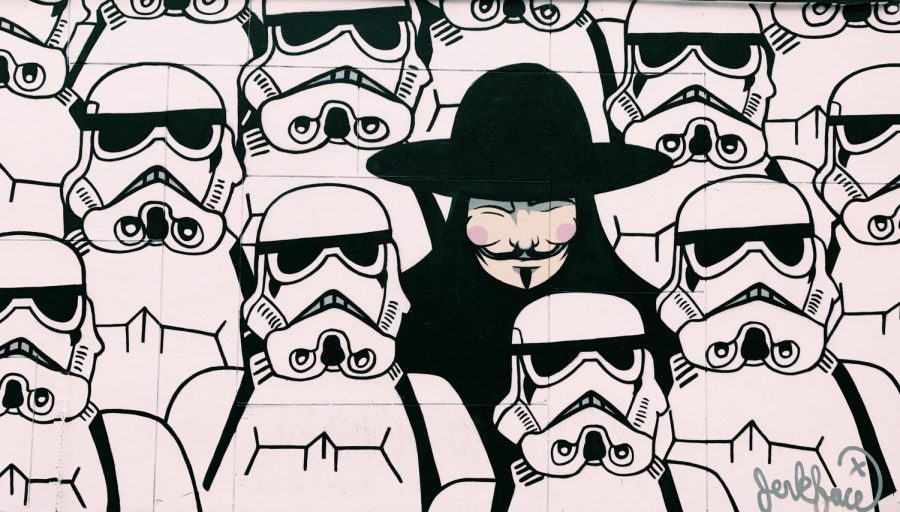What Is “Fake” Art?
A look at the definitions of “fake” art, in galleries and on the internet.
The definition of what is considered “real” and “fake” art becomes much more blurred when money is taken out of the equation, with opinions in the online art community differing greatly from person to person.
What does it really mean to be a “fake artist”? To answer that, we need to first answer what does it mean to be an “artist” at all. According to the Merriam-Webster dictionary, an artist is “a person who creates art (such as painting, sculpture, music, or writing) using conscious skill and creative imagination” or “a person skilled in any of the arts.” With that said, the consensus of what defines “real art” is something heavily debated in the art community, especially in regards to digital art and practices like tracing and using bases. This is not even mentioning points such as what is considered “art style theft” or the use of color palettes or adopts in various communities.
Of course, to talk about “fake art,” we have to address art forgery and art fraud. The definition of “fake” is a work that is a copy, a replica, or misattributed work. On the other hand, a forgery is a work that is intentionally meant to deceive. Both are liable under the Federal Trade Commissions Act and Copyright along with state laws and civil sanctions. A piece of artwork is protected by copyright the moment an artist creates it, making it the legal right of the artists to decide upon how their work is used or reproduced, preventing unlawful use and reproduction, and allowing for the artist to earn money from reproducing their art.
Nevertheless, fakes and forgeries can be circulated online and have thus been sold to museums, galleries, and people for large sums of money. One example of such an occurrence took place in January of 2018, when The Museum of Fine Arts in Ghent exhibited 26 fake works that were on loan from a collector.
However, a conundrum often debated amongst the art community is: does any of this apply to artists starting on the internet? While it is easy to draw the line between art forgery and fraud, the line is much more blurred when it comes to digital artwork that is created from editing or tweaking art that already exists. For example, many artists these days use bases or put their own unique twist on others’ artwork by adding filters and special effects. While it is easier to differentiate between what is acceptable and what is not when there is money involved, for those who create art as a hobby and who post their works on platforms such as DeviantArt, Instagram, Twitter, and Tumblr with no intention of earning money, what falls under the term “fake art” is controversial.
“I think fake art is plagiarized art/tracing. Otherwise, I think art is art, you can’t necessarily call any work ‘fake,” said Katherine, an Instagram artist (@yuk-ippi) who creates fan art and drawings of original characters. “I’d define a ‘fake artist’ as someone who steals art or traces and claims the work as their own. And a person who’s mock art by using minimal effort.” When asked about her opinion on edits and bases, Katherine said, “Edits and bases use the effort from an original artist and then adding to that. While I acknowledge that that is work, editors are in a different category than artists.” Along with this, I also asked about Katherine’s stance on fan art. “The thing with fan art, is that while it is the creator’s character, the artworks are original,” she said. “By labeling fan art, an artist already acknowledge that the characters / universe do not belong to them; however, the art one-hundred percent does. So that is ‘real art’ much like the original character creations.”
Of course, this is only the view of one artist, so I turned to some of the artists in the Bronx Science community for their opinions on the categorization of “fake art.” “The distinction [between “fake” and “real” art] is the ability to be honest, give credit, and have creativity. Fake art/artists usually lie, don’t give credit, and lack the creativity to make their own art,” said Nataile Khan ’22. Vivian Ton ’24, on the other hand, said, “Fake art and fake artists don’t exist whereas real artists do.”
There is a notable difference in opinion within the art community in regards to what is considered “real” and what is considered “fake” art. Nonetheless, a common consensus is that while using other artists’ work as inspiration or as a point to start out and learn is acceptable, it is when a person copies another’s work to pass it off as their own and fails to acknowledge the original creator that trouble arises. While the distinction between “real” and “fake” art may differ from person to person, giving credit to acknowledge original creators as well as not copying art and passing it off as one’s own is important.
“I think fake art is plagiarized art/tracing. Otherwise, I think art is art, you can’t necessarily call any work ‘fake,’” said Katherine, an Instagram artist (@yuk-ippi) who creates fan art and drawings of original characters.
Donna Li is a Graphic Designer and Student Life Section Editor for 'The Observatory' yearbook. They find the research involved in journalistic writing...

